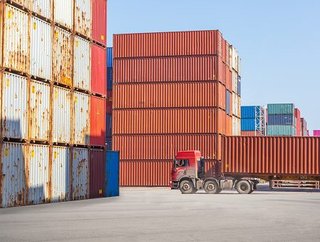Small Steps Key to Continual Improvement in Logistics

In the shape-shifting world of logistics, in which goods and conditions are rarely constant or static, achieving continuous improvement is immensely challenging.
The business formula for continuous improvement is known as PDCA (Plan-Do-Check-Act), which is also known as the ‘Deming Cycle’. This is a process used to continuously improve products, processes, and systems. It is a four-step framework, used to build a systematic and repeatable approach. These steps are:
- Plan First, identify the problem or opportunity for improvement and develop a plan to address it.
- Do Implement the plan and test the solution.
- Check Evaluate the results of the solution and determine its effectiveness.
- Act Take action based on the results of the evaluation.
But when businesses put such an approach into action across a logistics operation, what does it look like, and how do they implement it.
A recent example is provided by the Cainiao Group, the logistics arm of Alibaba, the Chinese multinational technology company specialising in e-commerce, retail, Internet, and technology.
Cainiao has announced a tailored offering to strengthen its supply chain capabilities for the fast-moving consumer goods (FMCG) sector. Its first customer is leading premium Chinese FMCG brand, Bestore, for whom Alibaba will provide full supply chain services for its food products, and will also support its globalisation strategy.
Services for Bestore and future partners will include end-to-end support for the labelling of FMCG goods, while partners also stand to benefit from Cainiao’s capabilities in streamlining inventory and supplier management for FMCG companies, to increase shipping efficiency and reduce costs.
“Globally, FMCG companies are experiencing a significant hike in costs as they cope with an unabated increase in prices of several commodities,” said Ricky Xue, Cainiao Group’s Southeast Asia GM, upon the launch of the service. (Xue has since moved on, and is now Chief Logistic Officer of Lazada, Southeast Asia’s leading eCommerce platform).
He added: “As a supply chain partner we noticed that companies are looking for ways to streamline, optimise and innovate to drive down costs and maintain price competitiveness across brands and products.
“With that in mind, our offerings are specially tailored for FMCG companies in order to help them better navigate complex local regulations, as well as inventory and supplier management, while reaping cost savings at the same time.”
By continuously improving its own offerings, Cainiao is helping its customers do exactly the same.
In a world of turmoil, in which disruption has become normalised, it is vital that logistics businesses like Cainiao help customers not to survive, but thrive.
Another logistics organisation that places great stock by continuous improvement is US-based Coyote Logistics.
Ben Steffes is the VP of Managed Services at Coyote. His team helps bring shippers a variety of solutions, from self-service transportation management systems and API integrations, to fully outsourced supply chain.
Steffes says that Implementing a continuous improvement programme “can seem like a daunting project but it isn't as difficult as it sounds”.
The key, he stresses, is “making small, incremental changes that can produce dramatic results”.
He adds: “When we revamped our own internal continuous improvement program, in less than one year we completed 260 projects, eliminated 270 hours a week of redundant and unnecessary tasks and also increased employee engagement.”
He adds: “If you are willing to commit to a consistent, structured approach, you can also implement a continuous improvement program that will make your supply chain operations more efficient.”
Steffes defines continuous improvement in a logistics context as being “a proactive approach to superior customer service that prioritises the elimination of waste and relies on employee involvement to develop solutions to challenges as they arise”.
He identifies six phases that together can result in “incremental improvements in processes and products, with the objective of increasing quality and reducing waste”.
These steps are built on the PDCA formula, and include:
- Assess current state
- Identify problem
- Establish target goal
- Create strategy map
- Measure effectiveness
- Celebrate successes
It is that last step that is most notably different to the traditional PDCA approach, but an extremely important one, says Steffes.
“Celebrating the success of your new procedures and strategies is a significant phase of the continuous improvement process,” he says.
“This is also an opportunity for strengthening your organisation, while fostering a team-oriented culture of individuals committed to ongoing improvement.
“Ways in which we have celebrated successes include department-wide emails recognising operations teams with the highest average number of projects per rep.
“We also give reps the opportunity to present their projects to senior leadership for feedback, and we give quarterly team winners a one-time team bonus.”
He adds: “For us, the most important part of the continuous improvement process is empowering individuals to make decisions and improve inefficiencies on their own.
“Everyone in our organisation has the capability to suggest and implement changes, and that impacts our entire culture.
“New reps are introduced to continuous improvement in their onboarding, and every team member is included in weekly departmental whiteboarding meetings that are dedicated to continuous improvement efforts.”
******
Make sure you check out the latest edition of Supply Chain Digital and also sign up to our global conference series - Procurement & Supply Chain 2024
******
Supply Chain Digital is a BizClik brand






